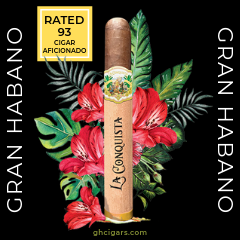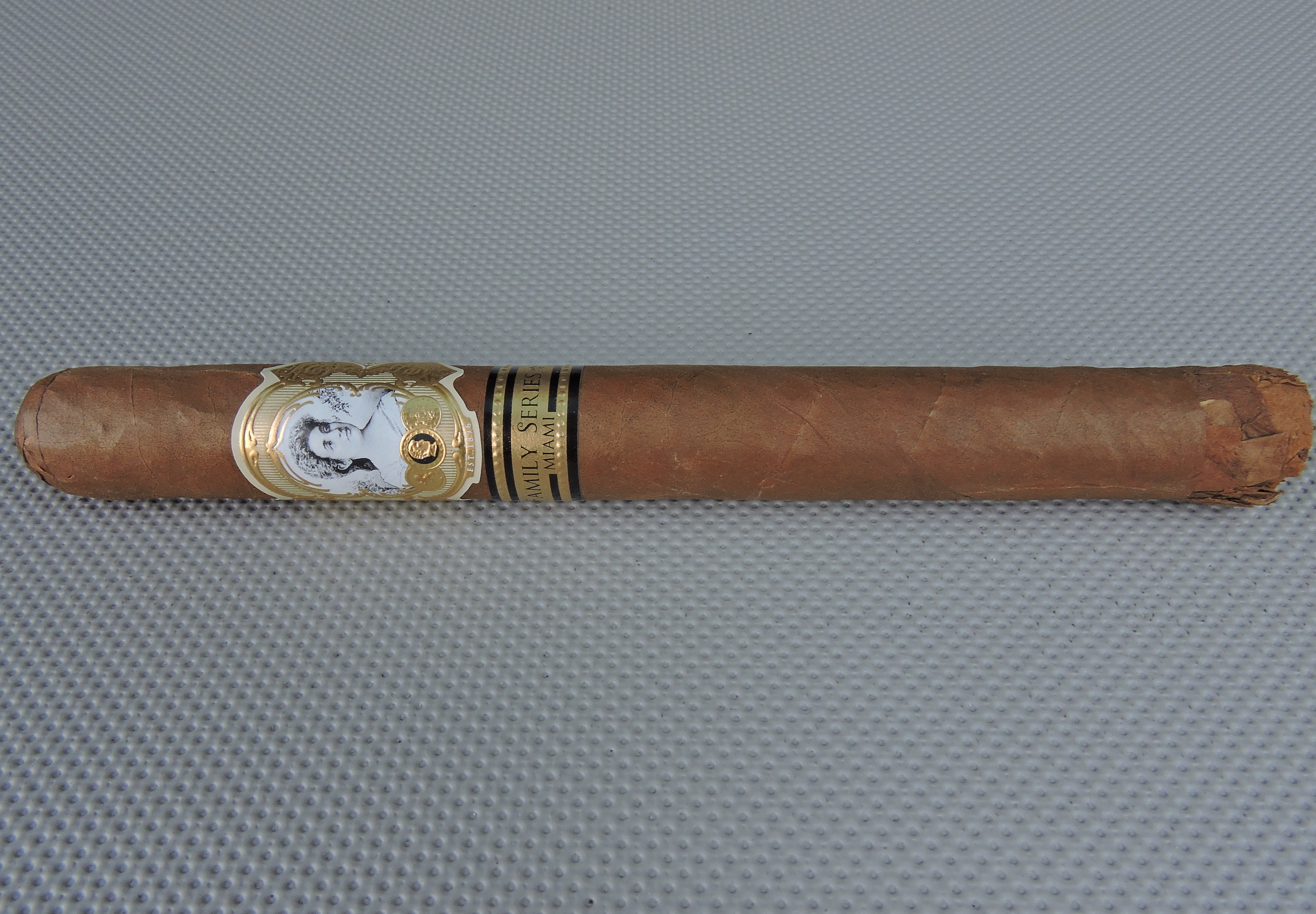
In 2010, William C. (Bill) Paley decided to resurrect an old cigar brand that his family produced called La Palin. It was back in 1896, when Paley’s grandfather Samuel Paley opened a cigar store in Chicago named Congress Cigar Company. He produced a cigar called La Palina that was named after his wife Goldie Drell Paley. When Samuel retired so did the La Palina brand, until his grandson Bill Paley decided to make a go of it again. For his first line, Bill Paley’s goal was to make the best cigar he could possibly make. To accomplish this, he collaborated with the Graycliff Cigar Factory in the Bahamas and created the ultra-premium La Palina Family Series. Since then, Paley has grown La Palina into one of the top boutique companies in the industry. At the 2013 IPCPR Trade Show we learned the Family Series and the relationship with Graycliff would come to an end, but that would not be the last of the Family Series. Paley decided to re-launch the Family Series out of the El Titan de Bronze factory in Miami, Florida – a factory where he had success with his La Palina Goldie and Mr. Sam lines. The La Palina Family Series would be rebranded as the La Palina Family Series Miami and feature an all new blend. Today we take a look at one of the offerings in that line, the Churchill sized La Palina Family Series Miami Pasha. While a very different cigar than what came out of Graycliff, it continues a tradition of excellence that Paley has established with La Palina as this is an excellent cigar.
The original La Palina Family Series pays homage to Bill Paley’s family with each vitola paying homage to a member of the Paley family:
- Pasha (Churchill) – named for Paley’s father, William S. Paley, featured a “brushed” footer
- Babe (Robusto) – named for Paley’s mother Barbara “Babe” Paley
- Alison (Torpedo) – named for Paley’s wife Alison
- Little Bill (Short Perfecto) – named for Paley himself
There were actually two blends in the original La Palina Family Series line. The Pasha and Babe would feature a Costa Rican wrapper and offered a cigar in the mild to medium range. The Alison and Little Bill were branded as La Palina Family Series “Ligero” and featured a stronger blend with an Ecuadorian wrapper.
For the La Palina Family Series Miami, the Pasha, Babe, and Alison now all share a common all-new blend. At press time, the Little Bill was not carried over.
We now take a closer look at the La Palina Family Series Miami Pasha and see what this cigar brings to the table.
Blend Profile
The new La Palina Family Series Miami incorporates an Ecuadorian Corojo wrapper, an Ecuadorian Habano binder, and an all-Nicaraguan filler.
Wrapper: Ecuadorian Corojo ’98
Binder: Ecuadorian Habano
Filler: Nicaraguan (Jalapa, Esteli)
Country of Origin: United States (El Titan de Bronze)
Vitolas Available
There are three sizes offered in the La Palina Family Series Miami that stay close to the original sizes of the La Palina Family Series. The Pasha is highlighted by a Brushed Footer just like the original Pasha out of Graycliff.
Pasha: 7 x 50 (Brushed Foot)
Babe: 5 1/4 x 50
Alison: 6 x 52 (Torpedo)
All three sizes are offered in ten count boxes featuring a lid that affixes to the box via magnets.
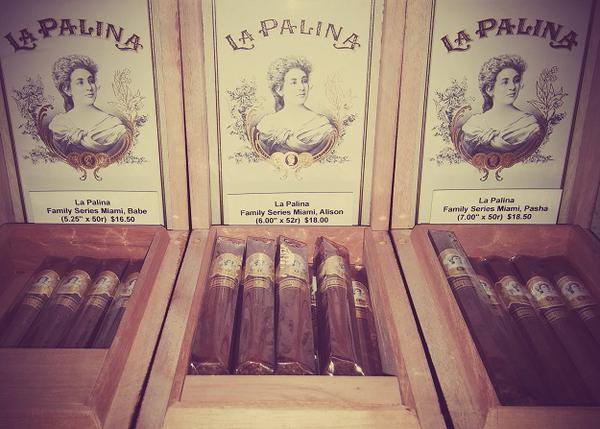
The Pasha is also offered in a 20 count box where each Pasha cigar is packaged in an individual coffin.
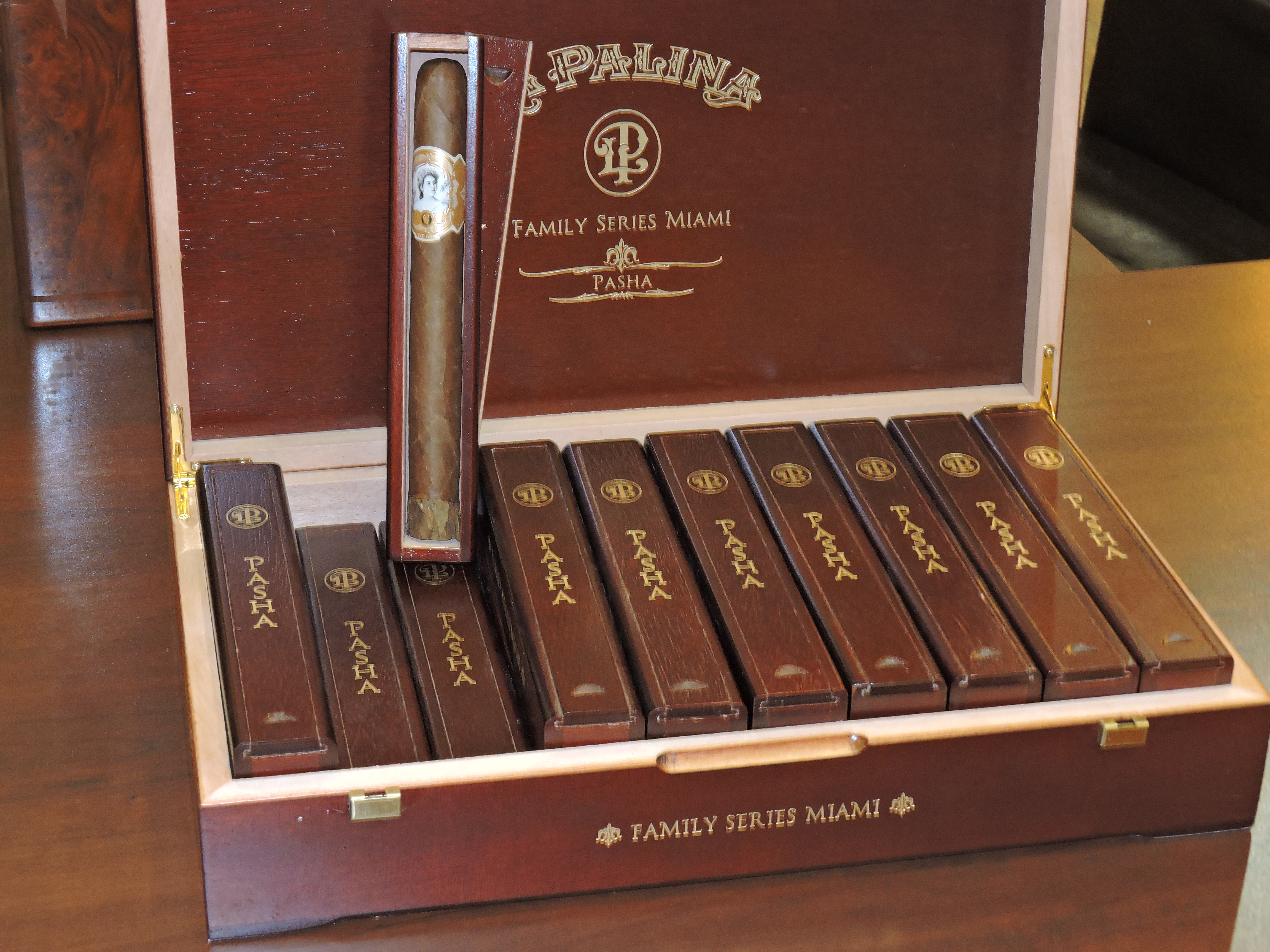
Appearance
The Ecuadorian Corojo wrapper of the La Palina Family Series Miami Pasha has a medium brown color with a light coating of oil on it. There are some visible veins, but the wrapper seams are well hidden. The footer of the cigar has the Pasha’s signature “brushed foot”. This consists of about a half inch coming up from the footer with no wrapper covering it.
There are two bands on the La Palina Family Series Miami. The primary band is the classic La Palina band found on several other La Palina line (and is the same one found on the original Family Series). The band features the black and white image of Goldie Paley is front and center on the band. The image is adorned with gold trim. Over the image is the text “LA PALINA” in a thin white font on a gold background. Below the image is the text “EST 1896” in a smaller white font that is also on a gold background.
There is a secondary band on each of the La Palina Family Series Miami cigars. It is gold in color with the text “FAMILY SERIES MIAMI” in black font. There are two black pinstripes across the top and bottom separated by a row of gold rivets. The text “Miami” sits on the middle of the inner black stripe on the lower portion of the band.
Preparation for the Cigar Experience
Prior to lighting up the La Palina Family Series Miami Pasha, I opted to go with my usual choice of a straight cut. Once the cap was removed, I proceeded with the pre-light draw experience. The cold draw delivered a mix of natural tobacco, cedar, and floral notes. Overall I considered the pre-light draw of this cigar to be excellent. At this point I was ready to light up the Pasha and see what the smoking phase would have in store.
Flavor Profile
The La Palina Family Series Miami Pasha started out with notes of natural tobacco, mixed fruit, and white pepper. During the unfinished portion of the cigar, I found the was a combination of mixed fruit and natural tobacco moved into the forefront. The wood and white pepper became secondary notes. I also detected a slight caramel note. Overall the cigar smoked quite smooth through the rough cut section. Meanwhile the retro-hale delivered a combination of pepper and cedar.
Once the Pasha moved into the finished (wrapper) portion of the cigar, the fruit and natural tobacco remained grounded in the forefront. There was now also a floral note that surfaced again. The floral notes, along with the caramel notes floated in and out of the forefront from time to time. The white pepper remained in the background. Meanwhile the wood and pepper remained in the background. This pattern continued throughout the first half.
As the Pasha moved into the second half, the fruit, caramel and floral notes significantly decreased. The wood notes expanded into a cedar sweet-spice and soon moved into the forefront joining the natural tobacco as primary notes. Meanwhile I still got a touch of white pepper in the background.
The last third saw the cedar become the dominant note. There still was a strong natural tobacco presence and the pepper now played much more of a role in overall the flavor profile. I also still detected some of the fruit notes in the background. This is the way the Pasha came to a close. The resulting nub was soft to the touch and cool in temperature.
Burn and Draw
From a burn standpoint, the La Palina Family Series Miami Pasha scored nicely. The cigar maintained a straight burn path from start to finish. The burn line itself had a slight curvature, but was never in danger of tunneling nor canoeing. I was particularly impressed how clean the cigar burned through the brushed section of the cigar and transitioned to the finished section. This was done with minimal flaking and with an ash that was firm. The ash itself had a silver-gray color to it. I also found the Pasha maintained an ideal burn rate and ideal burn temperature throughout the smoking experience.
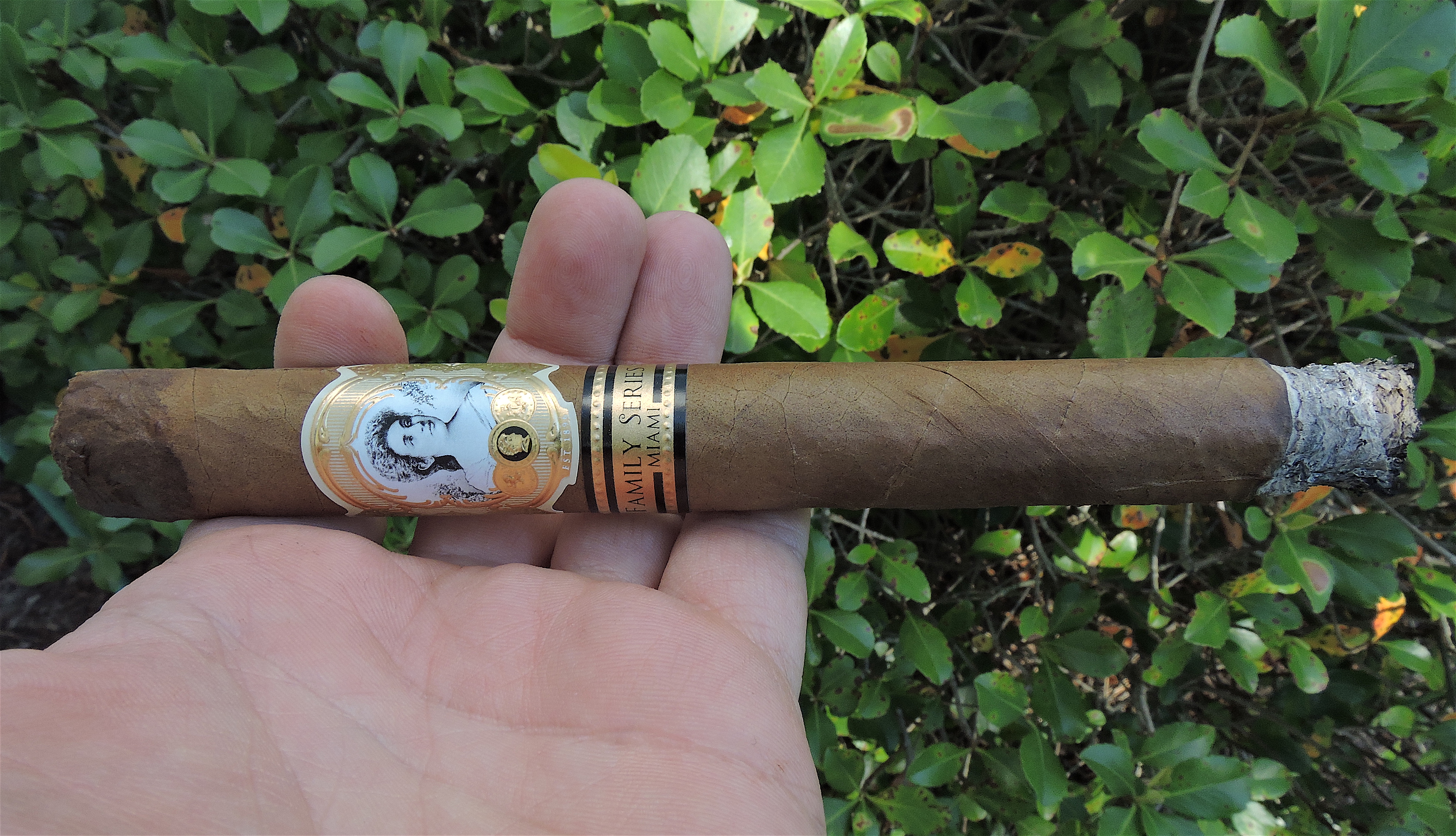
The draw to the Pasha had a touch of resistance to it. This is something I like on a cigar and it made the Pasha an enjoyable cigar to puff on.
Strength and Body
From both a strength and body perspective, I found the Pasha to have a little more depth than the original La Palina Family Series Miami (Pasha, Babe) cigars with the Costa Rican wrapper. Both the strength and body of this cigar fell into the medium range. By the last third of the Pasha, I found there was an increase in both attributes, but both didn’t quite push past the medium range. I also found there was a balance between the strength and body with neither attribute overshadowing the other.
Final Thoughts
The comparisons between the La Palina Family Series Miami and the original La Palina Family Series are going to be hard to avoid. Very simply, these are two different lines with two different blends. When the 2010 La Palina Family Series came out, this was an epic line. The blends in the original Family Series were also quite unique – unlike many other cigars on the market. As for the La Palina Family Series Miami Pasha, while I didn’t quite get the uniqueness of the original, it still was an excellent cigar. Bill Paley has said the original Pasha was his favorite cigar. With the new Family Series Miami Pasha, I would guess he is still quite satisfied. This cigar is one I could recommend to a novice or experienced cigar enthusiast. As for myself, while this cigar does carry a higher price point, it delivers a great experience. It’s certainly worthy of a box purchase.
Summary
Burn: Excellent
Draw: Excellent
Complexity: High
Strength: Medium
Body: Medium
Finish: Good
Assessment: 4.0-Box Worthy
Score: 92
References
News: La Palina Family Series Miami
Price: $18.50 ($20.00 with Coffin)
Source: Cigars Provided by Manufacturer
Stogie Geeks Podcast: n/a
Stogie Feed: n/a
Brand Reference: La Palina
